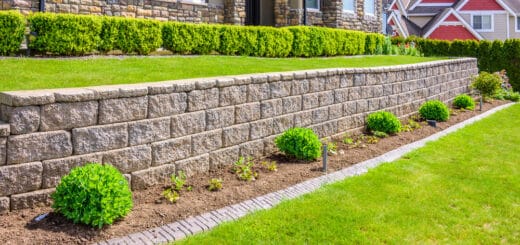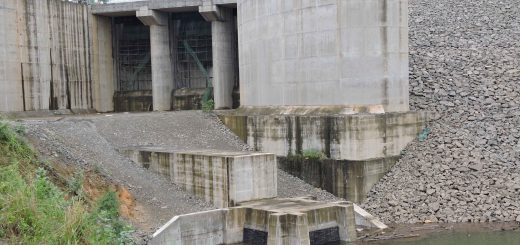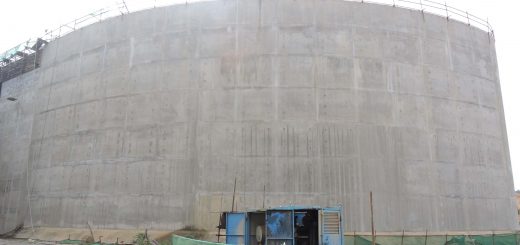Forces Acting on a Retaining Wall
Different forces acting on a retaining wall and their influence on the behavior of the retaining walls are discussed in this article. Depending on the nature of construction, the forces acting on retaining walls are varying.
For example, active pressure and at rest pressure can be considered. Based on the structural behavior forces to be considered in the design are assessed.
Let’s directly discuss the forces acting on retaining walls.
Type of Forces Action on a Retaining Wall
we construct a retaining wall to retain the water, soil, solid waste, or any other material in an unstable embankment.
Depending on the type of material to be retained as per the design requirements, there are different types of retaining walls such as concrete retaining walls, gabion walls, etc.
However, the method of application and nature of loads is more similar in most types of retaining walls.
Lateral Earth Pressure
There are three types of lateral load applied on a retaining wall based on the behavior of the wall.
- Active Earth Pressure
Force applied by the soil on the wall when the wall is free to deflect. In other words, for ease of understanding, we say soil moves towards the wall.
Active pressure is calculated from the following equation.
Pa = ka γ h ; ka – active pressure coefficient = (1-sinΦ) / 1+sinΦ), γ – density of soil and h – height of the wall
- Passive Earth Pressure
Pressure earth pressure is developed when the wall is pressing the soil. Here, we say, wall moving towards the soil for ease of understanding.
Passive earth pressure can be calculated from the following equation.
Pp = kp γ h ; kp – passive pressure coefficient = (1+sinΦ) / 1-sinΦ), γ – density of soil and h – height of the wall
- At Rest Pressure or At Rest Condition
This is a special case and the pressure varies between the active pressure and the passive pressure.
When we say at rest, we assume structure does not move. Therefore, the pressure applied to the wall increase than the active pressure.
At rest, the condition is considered in special situations and also the behavior of the structure could create the at-rest condition.
For example, we construct a rigid structure as a retaining wall and if it does not deform with the application of soil pressure(active pressure), the pressure will increase and it could reach the at-rest condition.
Apart from that, we considered at rest condition during the design, if the structure required a minimum deflection. For example, if we are constructing a cantilever retaining wall that we need to limit the top deflection, it should be designed for at-rest condition.
Then we have a comparatively stiff structure that can limit the deflection when forces are applied.
Pressure applied in the at-rest condition can be calculated from the following equations.
P0 = k0 γ h ; k0 – at rest pressure coefficient = (1- sinΦ), γ – density of soil and h – the height of the wall
The article Lateral Earth Pressure Coeffiencet could be reffed for more information
Surcharge Loads
The surcharge is a pressure load applied to the soil retained by the wall.
It could be a form of line load or uniformly distributed load.
The correct estimation of the surcharge load is very important in the design. For example, when there are structures near the retaining wall, correct pressure shall be considered in the design.
An incorrect estimate could lead to retaining wall failures.
Water Pressure
It is very important to be altered on the forces acting on a retaining wall due to the porewater pressure.
Incorrect estimation of the water pressure could lead to failures as discussed in the article retaining wall failures.
Water pressure makes a significant change in the factor of safety.
Therefore much attention shall be made to consider the water pressure in the design and when possible to arrange adequate drainages.
Axial Forces Action on Retaining Wall
If there are other structures supported on the retaining wall, we have to consider their effect on the design.
Axial load failures are not common types of failures in the retaining wall as the is a considerable section to carry the vertical loads.
Sometimes, a retaining wall and its foundation are considered as a column foundation in some of the structures. In such a situation, correct desing for the ultimate limit state and serviceability limit stage shall be done.
Wind Loads
Usually, wind loads are not that critical for retaining walls.
However, when there are other constructions on the free-standing retaining wall, it could affect stability.
For example, tall boundary walls built on the wall could have some effect. But, it might not be that critical.
Earthquake Loads
Earthquake forces acting on a retaining wall has a considerable impact on the stability of the retaining wall.
We calculate the earth pressure coefficient ( active pressure, passive pressure, at rest pressure) and then estimate the applied load.
The guideline published as Retaining and Floor Walls, EM 1110-2-2502, by US army corps could be referred for more information on equations to be used to calculate the earth pressure coefficients.
The article published as Seismic Pressure Coefficient could also be referred for the extract for the above guideline.
Impact Loads such as Accidental Loads, Blast Loads, etc.
Impact loads are not that common for retaining walls. They could be applied very rarely.
Further, there is less chance of applying those loads against the stability as if there is a high chance of applying the pressing in the exposed surface which generates restore moment.
However, retaining walls could damage due to these types of loads.
Other Forces
When the retaining walls are constructed on the other structure considering it as the foundation of the wall, there may be additional stress on the wall.
For example, if we constructed the retaining wall on the raft foundation as the basement wall when loads are applied on the raft foundation, some stress will be transferred to the wall due to the stiffness of the wall.
Out of plane bending action of the raft foundation transfer as in-plane stress to the wall. Due to the high stiffness in the in-plane direction, there will be considerable stress increase in the wall.
It shall be checked during the design.



